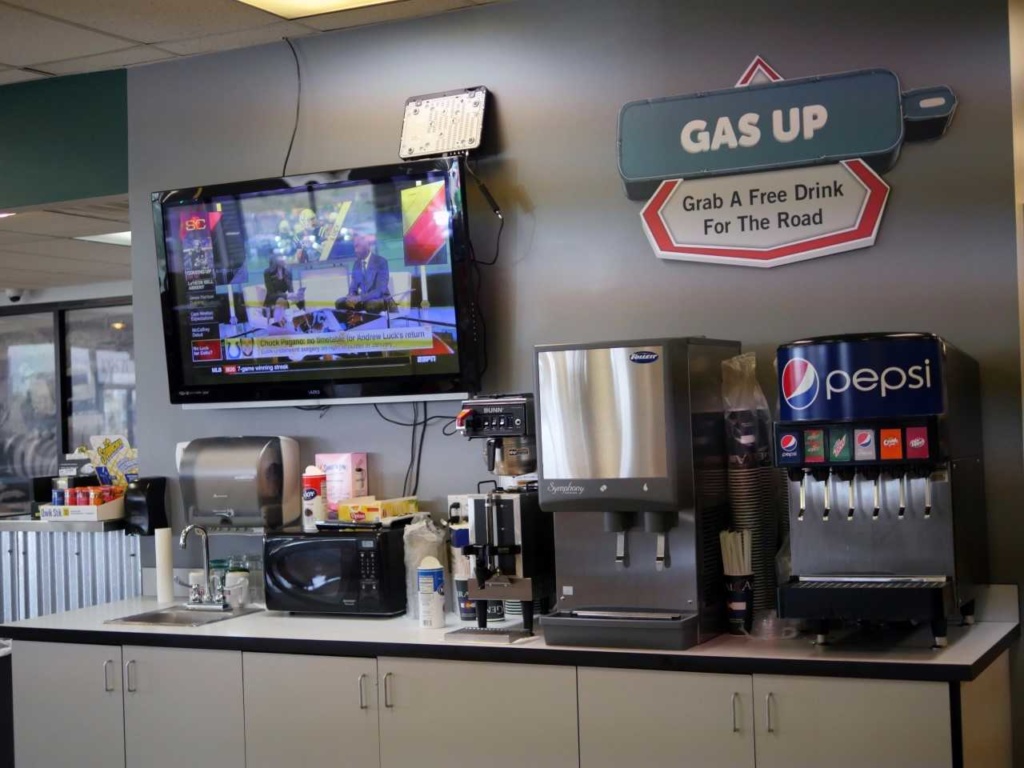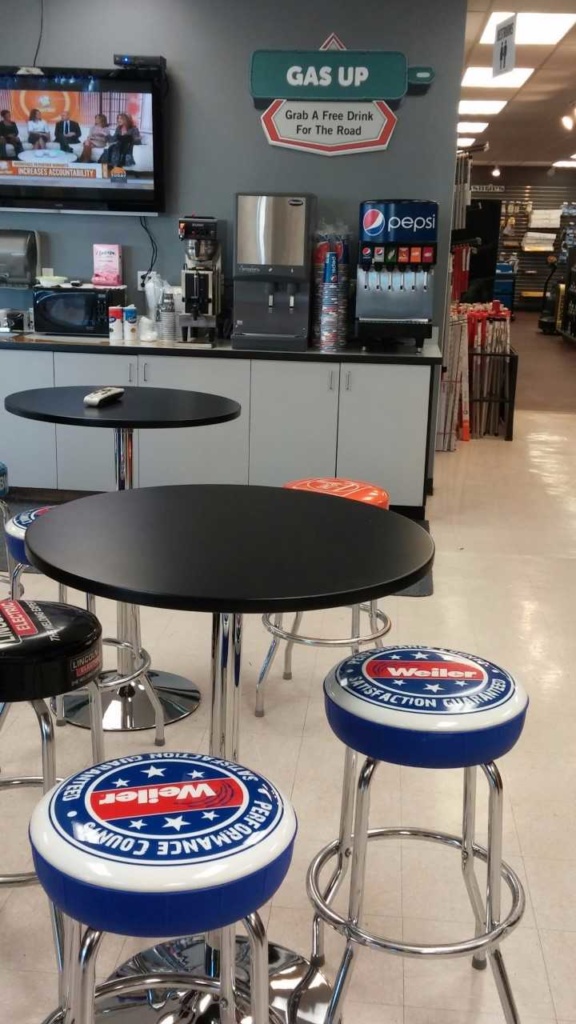By Paul Bernier
The “Customer Experience,” or “CX,” has been labeled by many as the new marketing battlefield.
What is CX? It’s your customers’ perception of how they were treated and how they feel about their experience with your business. In other words, if a customer likes you and feels he or she was treated well during the business transaction, that person will not only become a loyal customer, but also is likely to recommend your business to others. As we all know, word-of-mouth testimonials and personal endorsements are of huge value to businesses.
It’s important to understand that CX is not customer service, however, because there is a big difference between those terms. Customer service is doing something right, then and there, to service a customer – such as ringing up a purchase, helping a person find an item, or providing decision-making advice.
By comparison, CX is the “whole enchilada” of the buying or service transaction – including all the touches a customer has with your business – from looking up your website for directions, to the delivery or counter sale, to billing and customer service and everything in between.
A 2013 Harvard Business Review study showed that businesses that skillfully manage the whole customer experience are rewarded with higher customer satisfaction, increased revenues, reduced churn and even greater employee job satisfaction.
Notably, today’s customers have a different set of expectations. According to Walker’s ‘Customers 2020’ study, by the year 2020, customer experience will overtake price and product as the key brand differentiator. This is because of changes in technology, the internet, the use of smartphones and customer empowerment. With the digital age, your welding supply store is not one of the only players in town anymore; customers have many choices, and they know it. They also know they can “out you” very easily if they are unhappy, and they will.
Customers know that they literally can buy from hundreds of other outlets, and can do so with just a few computer or smartphone keystrokes. Customers also know that if they are not treated the way they feel they should be, they can let millions of others know instantly by posting a review about your store and their experience. This ability is very powerful because, more than ever before, consumers look at reviews (such as Google Reviews) before they buy. According to a 2016 BrightLocal survey, 91 percent of consumers read online reviews and are influenced by them, while 84 percent trust online reviews as much as a personal recommendation.
Eye-Opening Statistics
Here are some other interesting facts and statistics that you can’t afford to ignore:
Consumers are two times more likely to share a bad experience than a good one (American Express 2012 Customer Service Barometer).
A dissatisfied customer will tell between nine to 15 people about their experience and 13 percent of them will tell more than 20 people (White House Office of Consumer Affairs).
Only one out of 26 unhappy customers complain; the rest simply never come back
(Lee Resource, Inc.).
It takes 12 positive experiences to make up for one negative experience or review (Newell-Legner, Understanding Customers).
It costs six to seven times more to gain a new customer than it takes to keep an existing one (White House Office of Consumer Affairs).
86 percent of consumers are willing to pay more for a better experience (Superoffice.com).
58 percent of consumers will never use a company again after a negative experience (Nikola Brookes, NewsVoiceMedia).
A 2 percent increase in customer retention has the same effect as decreasing costs by 10 percent (Emmet Murphy and Mark Murphy).
80 percent of U.S. companies say they deliver “superior service,” while only 8 percent of their customers agree (Entrpreneur.com).
E-Commerce and Smartphones
E-commerce certainly has impacted how people do business today. For the first time ever, people are buying online more than they are in brick-and-mortar stores, according to a survey by comScore and UPS. That survey showed that 51 percent of shoppers make their purchases online today, compared to 48 percent who did so just two years ago.
Also, more than three-fourths of American adults now use a smartphone, an article in Phys Org reports. That’s more than double the level of use in 2011. Even more interesting, 80 percent of shoppers have used a smartphone while in a brick-and-mortar store to read reviews, check pricing or find alternative locations for the products they are looking to buy, the article adds. The trend has become so popular that even Amazon, the leader in online shopping, has been granted a patent for technology that will allow their emerging brick-and-mortar stores to block customer searches of competitors’ products while using the Amazon store’s Wifi. The technology may redirect a person’s search to other content and could alert an in-store Amazon employee to be directed to the customer (Forbes, June 2017; Techcrunch.com June 2017).
Personnel Training
At General Air, we have put special emphasis on CX over the last couple of years, and we have made changes and implemented specific procedures to help ensure our customers a better CX. We’re also helping our employees manage for excellent customer experience. You may find these steps useful, too:
A CX training segment has been added to all new-hire orientation training for all employees who may be in contact with customers in any way. (This includes counter sales, customer service, drivers and any other service personnel.)
CX training seminars are conducted for our existing employees in the same positions.
Store managers are trained to manage CX efforts in their stores.
The Store Itself
Since a great portion of General Air’s total company sales (34 percent in 2016) occur over the counter in our various locations, we have implemented uniform steps in all stores to improve interior appearances and store operations to create a more positive customer experience. They include:
Posting large signs for each type of product, making it easier to navigate the store and find items.
Changing wall and display colors to accent the colorful items we carry.
Adding a break area in each store for customers and vendors to use. This consists of bistro-style tables and stools where customers can get a free fountain soda or coffee and catch up on the latest news on the large flat-screen TV there. This helps them feel at home in our store as much as possible.
Locating 24-hour locker pick-up stations at several sites. This concept is a real convenience for customers who can’t get to the store during normal business hours. They can access product orders, including cylinders, through lockers where store personnel earlier set items aside. Given a code, customers then can access the locker on weekends, holidays, nights, or anytime.
Conducting extensive training with store personnel on positive customer interaction.
CX Training
We have made the effort to train store personnel on important ways to interact with customers, such as what to say and what not to say.
We point out that asking a customer, “Can I help you?” caries a stigma, and can insinuate, “What are you doing here?” or “What can I sell you quickly?” That phrase usually gets a poor response, too, such as, “I’m just looking.”
Instead, we stress a greeting of “Hello, _______ (the customer’s name), or if we don’t know the customer’s name, “Welcome back.”
On the flip side, we have our store salespeople wear name tags.
We also focus on greeting customers within 10 seconds of when they enter the store. Even if all personnel are helping other customers, we want them to at least acknowledge the incoming person.
We encourage our staff to engage with customers to build rapport. Friendly inquiries such as, “What are you working on?” or “What do you do?” allow customers to open up and chat. A show of interest helps break down barriers. We’ve found that this type of interaction tends to lead to customers adding more items to their order, because the conversation allowed our clerk to talk about or show the customer items that could be helpful to the project.
Here are two examples of amazing customer experience that created brand loyalty for those who benefited, plus earned enormous goodwill through extensive media exposure. They truly show the “above and beyond” quality of excellent CX.
Morton’s Steak House: A man jokingly tweets that he wants to have a steak delivered from his favorite steakhouse to the airport during his brief layover. Hearing that, a Morton’s staffer drove 23 miles with the man’s steak dinner, delivering it at the airport, to the surprise of all around.
Trader Joe’s: When an 89-year-old man was snowed in at his home, his daughter, who lived elsewhere, was concerned about his food supply. She called many grocery stores in that area to try to have food delivered, but all said they didn’t provide delivery service (including Trader Joe’s). When Trader Joe’s personnel asked for more information and discovered why delivery service was needed, the store changed course. Within 30 minutes, food was delivered to the man’s doorstep, free of charge.
And lastly, this quote from poet Maya Angelou will help you remember what excellent customer experience is truly all about: “I’ve learned that people will forget what you said, people will forget what you did, but people will never forget how you made them feel.”
Paul Bernier is marketing director for General Air, a seven-store distributorship based in Denver. He began his industry career in 1996 at Maine’s Waterville Welding Supply, staying there until 2008, when he moved to Colorado. He spent five years as an Airgas Intermountain account manager before joining General Air in 2013. Bernier has a B.A. from the University of Maine/Farmington and an MBA in marketing from Colorado Tech.
He can be reached at: [email protected] and 719-634-7003 x 1447.















